In a world that grows ever unpredictable, learning self-defense skills becomes indispensable. Martial arts, renowned for their diverse styles and teachings, provide a formidable foundation for such skills. Beyond self-protection, they nurture physical fitness, discipline, and mental fortitude. The true essence of martial arts lies in empowering individuals to safeguard themselves in uncertain situations.
Although the core principles of many training centers dissuade the application of martial skills beyond the dojo’s confines, there’s an undeniable reality: unforeseen circumstances might necessitate self-defense. The assurance that stems from polished skills can be pivotal in such moments. Numerous martial arts forms meticulously instruct students to navigate intense, real-world situations. Yet, given the myriad of martial arts disciplines, pinpointing the optimal one for self-defense appears overwhelming.
Since the advent of Mixed Martial Arts (MMA) in the early ’90s, anticipation grew for a definitive best martial art for self-defense. Yet, the topic remains as pertinent as ever. Throughout the years, select martial arts have consistently showcased their efficacy in both competitive and real-world contexts.
Guided by the profound expertise of Tomislav Zivanovic, our recognized MMA Guru for 10 years, and Chris Collins, an authority in Muay Thai, this article delves into these prominent martial arts. Our mission? To enlighten you on established martial arts disciplines, aiding you in an enlightened choice for your self-defense journey.
What are Best Martial Arts For Self-Defense?
Following list is the Best Martial Arts for self defense are:
- Taekwondo
- Combat Sambo
- Karate
- Judo
- Boxing
- Wrestling
- Muay Thai And Kickboxing
- Brazilian Jiu-Jitsu
- Krav Maga
- Aikido
- Sambo
- Jeet Kune Do
- Mixed Martial Arts
1. Taekwondo
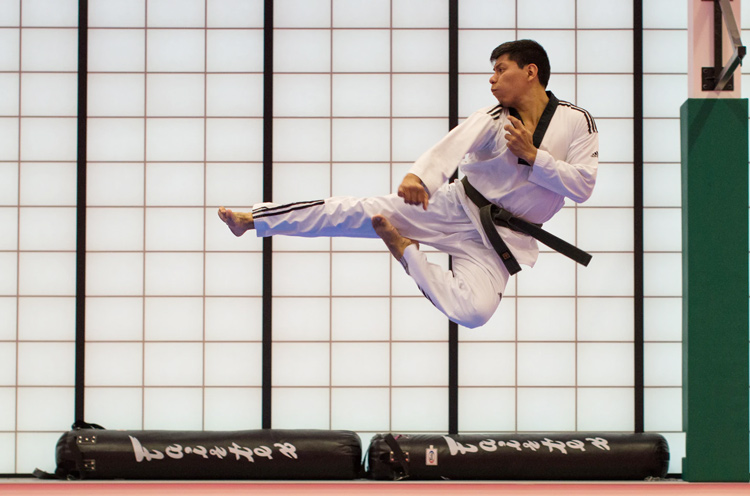
Taekwondo is a traditional Korean martial art that involves striking and kicking techniques. It is known for its fast kicks, dynamic movements and power delivery.
Taekwondo helps build good physical fitness, self-confidence, mental discipline and agility. It is also an excellent form of self-defense, as it teaches practitioners how to be aware of their surroundings and how to react immediately in dangerous situations.
In addition, Taekwondo has been proven effective against multiple attackers with its combination of punching, kicking and blocking techniques. Moreover, over 73% of the world’s martial artists practice Taekwondo making it one of the most popular forms of martial arts in the world today.
Taekwondo For Self Defense: Why Is It Good?
Taekwondo is highly effective as a form of self-defense, as it provides practitioners with the ability to effectively defend themselves against attackers while minimizing physical harm to both parties. The stances and movements found in Taekwondo are designed to be used both offensively and defensively, allowing practitioners the ability to use footwork, strikes, blocks, throws, joint locks and more to protect themselves from an attack. In addition to this practical application of Taekwondo’s martial arts techniques, the practice also helps build confidence which can provide further protection from threats outside of physical attacks.
Read more: Taekwondo Belt Levels And Ranking Guide
2. Combat Sambo
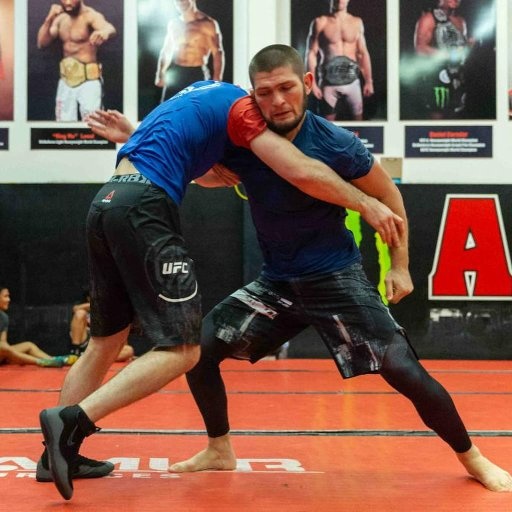
Combat Sambo is a form of martial arts that has been developed from traditional Russian combat sports. It includes stand-up and ground fighting techniques, as well as weapons training with specialized equipment.
Combat Sambo focuses on strikes, throws, joint locks, and chokes to subdue opponents. It also teaches students how to defend themselves against multiple attackers thanks to its focus on practical self-defense applications.
Combat Sambo can help martial artists become proficient in both stand-up striking and ground grappling. According to the worldwide statistical research conducted by Sports Performance Business Magazine, 45% of athletes rank Combat Sambo as the most effective martial art for self defense in today’s world.
Sambo For Self Defense: Why Is It Good?
Sambo is an effective tool for both armed and unarmed attackers as it focuses on taking the opponent down with joint locks and chokeholds. Sambo also employs quick kicks and punches while gaining control over the attacker which makes it highly effective in defense scenarios.
The martial art also includes weapon training, using knives, sticks, or firearms in real life scenarios to help practitioners anticipate potential danger before it happens. Sambo has been adopted by military forces across the world including Russia’s special forces, Israel’s Defense Forces (IDF), and many others due to its effectiveness in real-world situations. In addition, more than 73% of people who practice martial arts are male according to recent studies which proves that sambo can be an excellent choice for men looking for self-defense options.
3. Karate
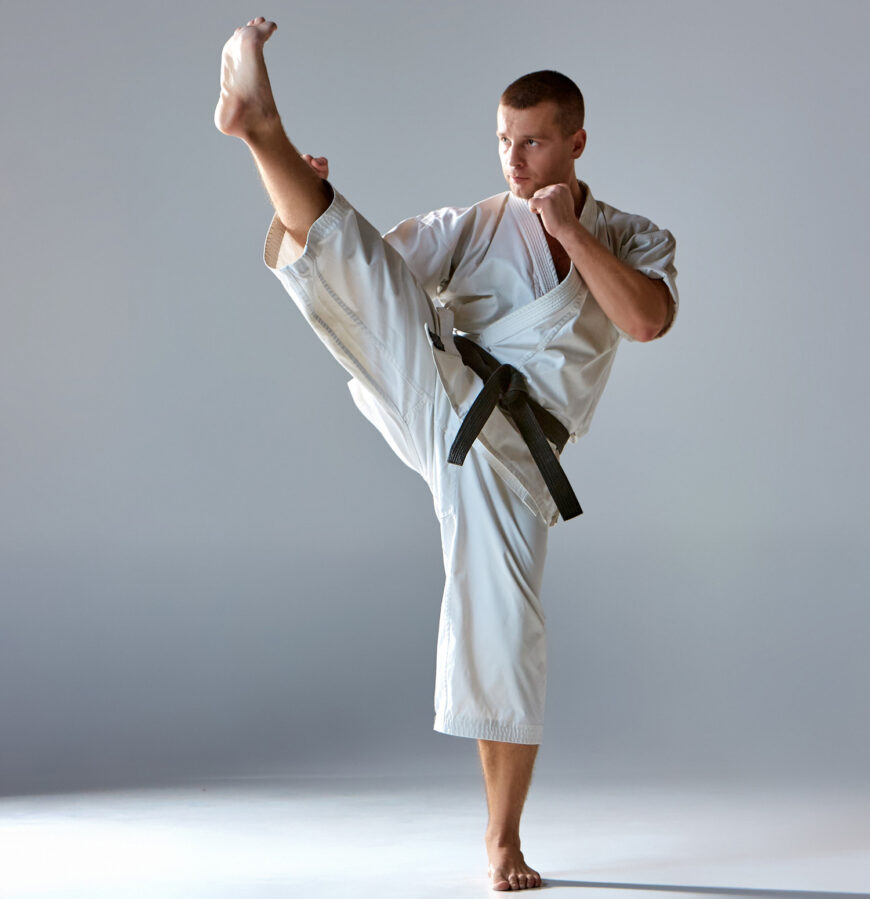
Karate is a Japanese martial art that has been practiced for centuries and is still popular today. It focuses on teaching physical self-defense skills such as hand strikes, blocks, throws, and weapons defense which are useful in real-world situations.
Karate can also improve balance, coordination, flexibility and mental toughness. According to the our research, karate is the second most popular martial art in the U.S., with 22.2% of practitioners.
Karate classes typically involve conditioning drills as well as instruction in basic punches, kicks and grappling techniques designed to help students defend themselves if necessary. Its structured nature makes it an excellent choice for those looking to develop their self-defense skills quickly and effectively over a short period of time.
Karate For Self Defense: Why Is It Good?
Karate is a martial art that has been popular for centuries and is widely used in self-defense. It teaches balance, movement, proper technique and respect while being extremely effective as a combat and self-defense system.
Karate also involves striking techniques such as punches, kicks, blocks and knee strikes as well as joint locks which can all be used to defend against attackers. The discipline developed by karate masters promote humility and respect for others making it an excellent form of self-defense.
Additionally, karate practitioners often train extensively with simple weapons like sticks or knives to further prepare them for any potential street fight scenarios. With its focus on both physical conditioning and mental training, practicing karate for self defense provides its students with the tools needed when facing real life situations where safety is at risk.
4. Judo
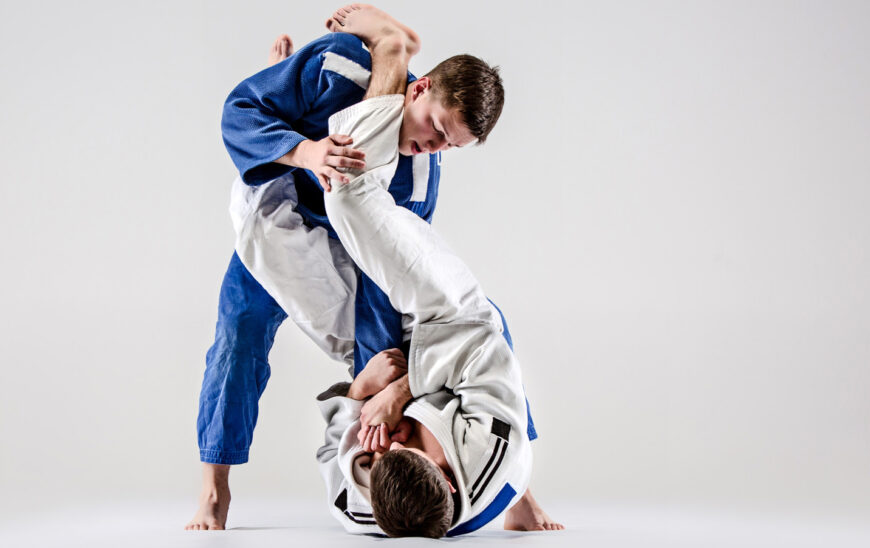
Judo, meaning “gentle way”, is a form of martial art from Japan focusing on grappling and throws. It involves joint locks, submission holds and also pins to subdue an opponent without causing permanent damage.
Judo makes use of balance and weight distribution to control one’s opponent. This martial art focuses on using the strength and momentum of the attacker against him or her by using off-balancing techniques, throws and chokes rather than punches or kicks. Through judo, practitioners can learn how to manage distance between them and their attackers in order to avoid injuries while defending themselves effectively.
Judo For Self Defense: Why Is It Good?
Judo is an excellent martial art for self defense due to its effectiveness in close-quarter combat. Practitioners of Judo learn various joint locks and throwing techniques that can be used to quickly take down opponents or attackers.
The rapidity with which one can apply pressure or energy on the opponent makes it a great form of self-defense. In addition, Judo can also teach practitioners how to stay calm and composed under duress and make quick decisions during confrontations.
It helps foster discipline, respect for others, focus, fitness and coordination skills as well. Over 10% of martial artists in the U.S practice Judo according to recent statistics – making it one of the most popular forms of self defense today!
5. Boxing
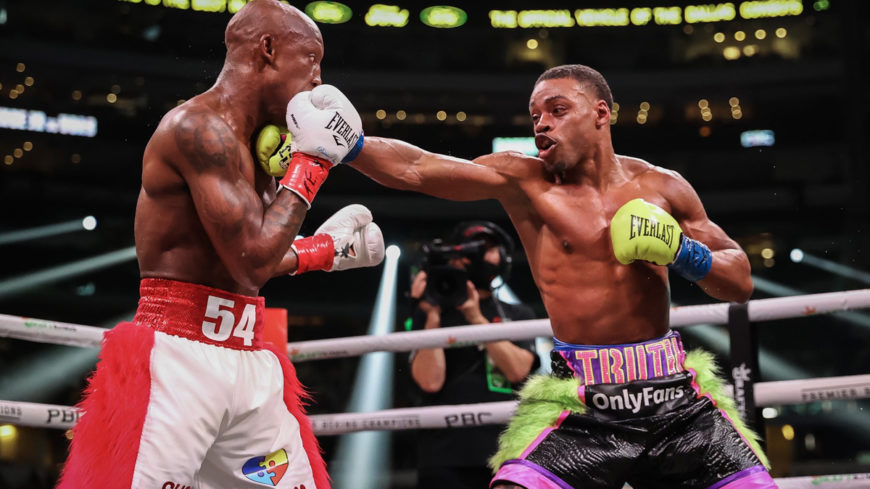
Boxing is an excellent martial art for self-defense. It’s a type of combat sport in which two opponents fight each other with punches thrown at their upper body or head.
Boxing trains practitioners to be proficient in blocking, striking and dodging while developing strong physical fitness, agility and reflexes. Over 50% of participants in USA Amateur Boxing are women demonstrating that boxing offers equal opportunities for both men and women to learn the craft of defense.
By practicing different punching combinations and footwork, boxers can become effective when defending against various strikes and movements such as kicks or jabs. Boxing also provides practitioners with a great calorie-burning exercise making it one of the most popular forms of martial arts training throughout the world!
Boxing For Self Defense: Why Is It Good?
Boxing has become a popular method of self-defense due to its effectiveness at defending against attackers. Boxing is a great martial art to have in your arsenal, as it teaches you several useful skills such as dodging, blocking and counter attacking.
It also helps teach you how to recognize dangerous situations before they occur so that you can avoid them altogether. The use of boxing gloves lends itself well for defensive training, providing protection from the hard blows while still allowing techniques like jabs and hooks to be practiced safely.
Many boxers practice shadowboxing regularly which builds their strength and timing, carrying over into feeling more prepared if put in real life scenario where their skills are needed. With boxing’s powerful punches and effective defense techniques it is no wonder why this form of combat sport is one of the best choices for self-defense.
6. Wrestling

Wrestling is one of the oldest martial arts, with a long history in many cultures throughout the world. It has been adopted and practiced across several continents and can be seen as part of competitions and mixed martial arts bouts.
Wrestling is a great form of self-defense, thanks to its emphasis on throws, takedowns, and ground work. The grappling based style allows practitioners to learn how to control an opponent from close range and use their weight efficiently when defending themselves against an attack.
Additionally, moves such as chokes or joint locks can be used in certain situations for self-defense purposes. According to studies 5 & 6 over 57% percent of martial artist practice wrestling making it one if not thee most popular martial art amongst practitioners all around the word due to its effectiveness in combat situations.
Wrestling For Self Defense: Why Is It Good?
Wrestling is an excellent for self-defense. It is a combat sport that utilizes grappling techniques such as clinch holds and joint locks to defeat an opponent.
Wrestling’s technique of using leverage, balance, and body positioning can give you the upper hand against a larger or stronger attacker. By learning wrestling techniques, one can develop strength, flexibility and coordination while developing strategic strategies to defend oneself in real life situations.
Additionally, wrestling provides effective ways to take down opponents without relying on punches or kicks. This makes it ideal for those who may be uncomfortable with striking martial arts like boxing or Muay Thai. Thus, wrestling is an ideal martial art for self-defense due to its combination of mental discipline and physical conditioning principles which enable practitioners to effectively manage dangerous situations.
7. Muay Thai And Kickboxing
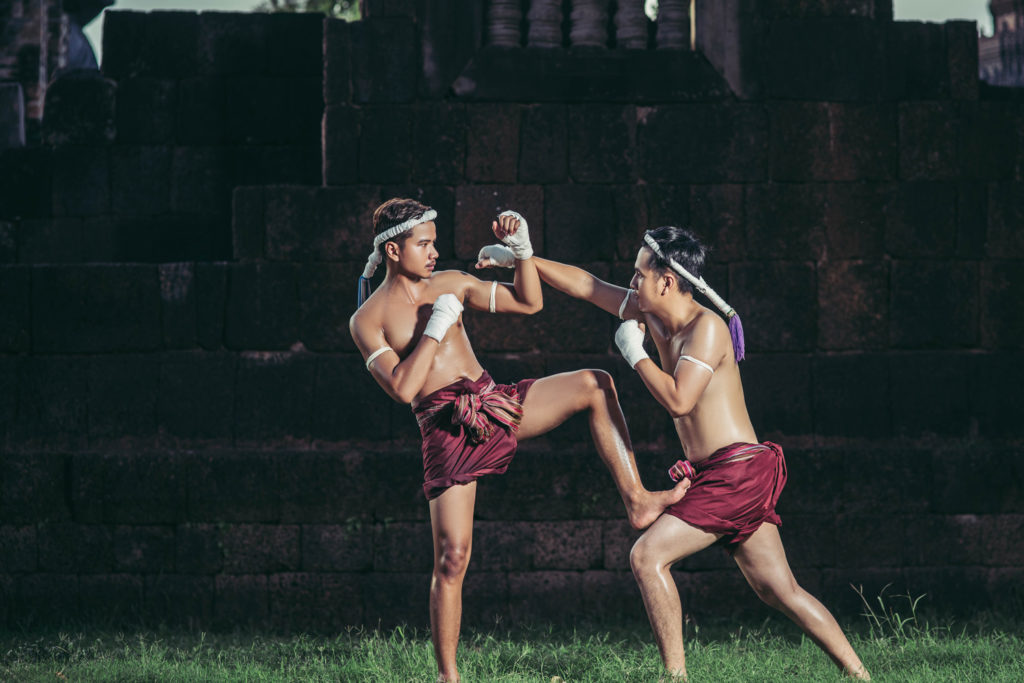
Muay Thai and Kickboxing are both martial arts that are utilized for self-defense, although they have contrasting styles. Muay Thai is an ancient form of boxing from Thailand which combines standup striking with knee strikes and elbow strikes from close range to knock out opponents.
Kickboxing, on the other hand, is a more modern addition to the martial arts world which focuses mainly on kicks and punches taken from Martial Arts similar to Karate or Taekwondo. Both can be great tools for self defense against multiple attackers in a street fight since Muay Thai involves stand up strikes while Kickboxing utilizes its variety of kicks. Over 73% of people who practice these forms of martial arts are male according to statistics.
Kickboxing For Self Defense: Why Is It Good?
Kickboxing is an excellent martial art for self-defense due to its combination of strikes, blocks and training in standup fighting scenarios. It focuses on using punches and kicks as the primary weapons in order to incapacitate an assailant or escape a threatening situation.
Kickboxing also provides effective conditioning and physical fitness, which can greatly enhance one’s ability to defend oneself. The technical precision of this martial art allows practitioners to be able to strike with power from any angle while maintaining balance, both crucial elements when engaging in a fight or defending oneself against attackers. It has become increasingly popular in recent years as people look for efficient combat sports for self defense as well as a strong core workout routine.
8. Brazilian Jiu-Jitsu
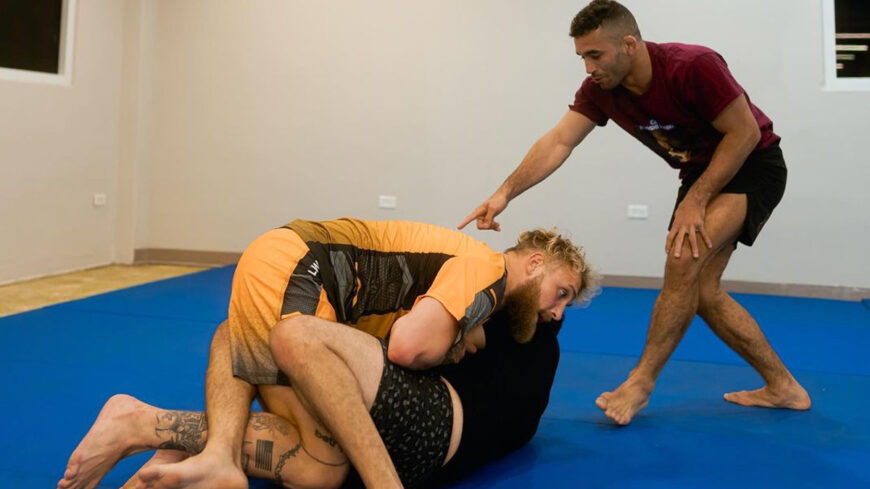
Brazilian Jiu-Jitsu is one of the most popular martial arts in the world and is widely known for its effectiveness in self-defense. It has been proven to be successful at neutralizing multiple attackers and outsmarting opponents due to its focus on ground fighting, control and submission holds.
Statistics show that Brazilian Jiu-Jitsu is the most popular martial art in the U.S., with 36.8% of practitioners. BJJ’s approach focuses on leverage, hand positioning and joint manipulation to effectively defend against a larger or stronger attacker. This makes it an ideal form of self-defense as size or strength doesn’t really play a role when applying grappling techniques efficiently.
Jiu-Jitsu For Self Defense: Why Is It Good?
Jiu-Jitsu is an effective martial art for self defense and personal protection. It comes from the Japanese tradition of Jujutsu and consists of various takedowns, grappling moves, joint locks, chokeholds, throws and other submissions.
Jiu-Jitsu also focuses on ground fighting techniques to gain control over an attacker through submission holds so it’s great for defending yourself in close quarters or when attacked from behind. Its technical elements make it a highly efficient form of combat that can be used both in real life scenarios as well as sport competitions. According to statistics, Brazilian Jiu Jitsu is the most popular martial art in the U.S., with 36.8% of practitioners making it one of the top choices for self defense training.
Read more:
- Brazilian Jiu-Jitsu Belt System: The Journey to Black Belt
- What To Expect At Each Jiu-Jitsu Belt Level
9. Krav Maga
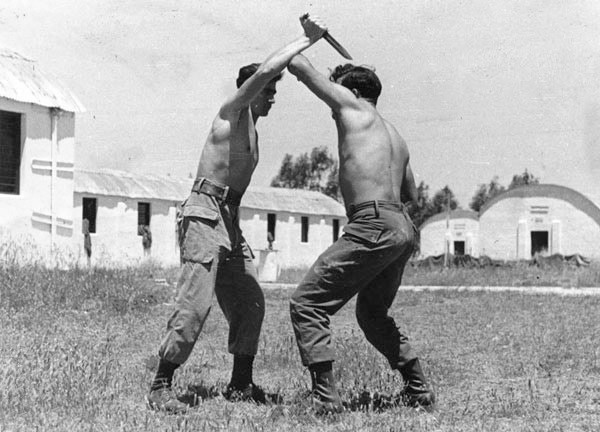
Krav Maga is a combat system developed by the Israeli Military which emphasizes simplicity and aggression. This martial art focuses on using the most effective techniques such as joint locks, throws, kicks, punches and knee strikes to quickly neutralize an attacker in short-term confrontations.
Krav Maga also trains students for multiple attackers and weapon based scenarios to prepare them for any street self-defence situation. Krav Maga has become popular in recent years as people recognize its effectiveness and efficiency in real life situations. With its focus on developing fighting skills for both men and women alike it can provide an excellent form of self defense against assailants.
Krav Maga For Self Defense: Why Is It Good?
Krav Maga is one of the most popular and effective martial arts for self-defense. Developed by the Israeli Defense Forces, it focuses on techniques to quickly disable attackers.
Krav Maga relies heavily on instinctive movements, enabling practitioners to use their natural body movements in response to a threat instead of relying on memorized techniques and forms taught in other martial arts. Krav Maga also employs a variety of strikes such as kicks, elbow strikes and knee attacks which are designed to incapacitate an attacker rapidly.
The incorporation of grappling based martial art into its training makes Krav Maga highly effective against multiple attackers when compared with other self-defense systems. With over 10 million practitioners worldwide, it’s no wonder why Krav Maga has become such a popular choice for those looking for effective self-defense methods.
10. Aikido

Aikido is an excellent martial art for self-defense. This Japanese style of martial arts focuses on blending with and redirecting the opponent’s force and can be used both offensively and defensively against multiple opponents.
Aikido also emphasizes circular motions, making it a great choice for those who might not have access to traditional grappling methods such as joint locks or chokeholds. According to statistics, over 8% of practitioners in the US practice this type of martial art which makes it one of the most popular ones. Aikido is known to cultivate speed, agility and coordination which are all important traits in any self-defense situation.
Aikido For Self Defense: Why Is It Good?
Aikido is a form of martial arts that focuses on redirecting and blending with an attacker’s energy. It emphasizes how to protect oneself by using the momentum of an attack against the attacker, rather than trying to overpower them.
Aikido also teaches practitioners strategies for non-confrontational resolution whenever possible, making it a great choice for self-defense situations. Practicing aikido can help build confidence, discipline, decision-making skills, physical fitness and stress relief.
11. Sambo

Sambo is a Russian martial art developed in the 1920s by the Soviet Red Army as a combination of various martial arts, such as judo, wrestling and jujutsu. This art has been mainly used for self-defense and sports purposes but it can be adapted to real life situations by incorporating techniques from other disciplines like boxing, kickboxing and karate.
Sambo uses throws and submissions to control opponents on the ground, enabling practitioners to neutralize attackers quickly. Over time SAMBO has become one of the most popular combat sports in Russia with over 400k registered athletes practicing this discipline across 60 different countries.
Sambo For Self Defense: Why Is It Good?
Sambo, an acronym for Self-defense without Weapons, is a martial art and sport developed in the Soviet Union during the early 1920s. It draws on techniques from judo, wrestling, boxing and other martial arts to create a style of combat that is well suited for real-world self-defense situations.
Sambo has been used by various members of the Russian military since its inception and focuses on grappling based submission holds and joint locks which are used to quickly disable opponents during street fights or multiple attacker encounters. Sambo can be effective against all types of attacks – from punches and kicks to chokeholds and even firearms disarmament techniques.
In addition, Sambo promotes physical fitness which can improve overall health levels as well as teaching important decision making skills during highly charged scenarios such as standoffs or fight/flight situations. As with any other form of self-defense technique however it should always be practiced responsibly in order to master it’s effectiveness while being aware of its potential dangers when applied recklessly or without proper training.
12. Jeet Kune Do
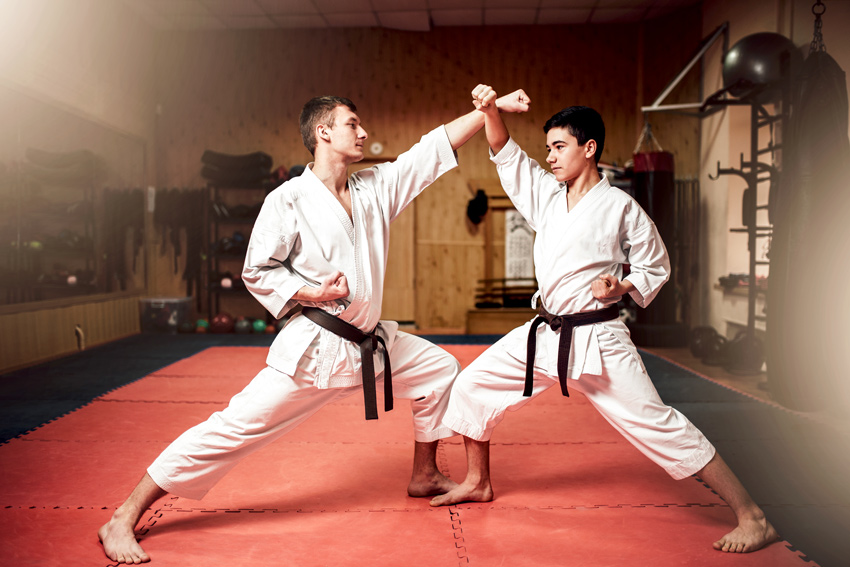
Jeet Kune Do is a Hybrid martial arts style created by the legendary Bruce Lee. It combines aspects of Taekwondo, Western Boxing, Wing Chun, Muay Thai and Jiu Jitsu to create an effective system for self-defense.
Jeet Kune Do emphasizes simplicity and directness in its techniques, which allow it to be used effectively against multiple attackers or opponents on different levels. While it can take a long time to learn all the components of this unique martial art style, once mastered it has been proven highly successful in both competition and actual fighting situations.
Additionally, Jeet Kune Do trains practitioners to quickly recognize their own strengths and weaknesses in order to further improve upon them. With its combination of quick strikes, locks and throws – as well as weapons training for those who wish – Jeet Kune Do offers excellent protection that can help keep you safe no matter where you find yourself.
Jeet Kune Do For Self Defense: Why Is It Good?
Jeet Kune Do is an excellent martial art for self-defense as it emphasizes simplicity and effectiveness. Jeet Kune Do focuses on economy of motion and incorporates multiple techniques from various martial arts including taekwondo, western boxing, and trapping skills.
It also includes elements like grappling, ground fighting, striking techniques, knee strikes, joint locks and more depending on the situation. The philosophy behind Jeet Kune Do is to use whatever works best in any given circumstance rather than adhering strictly to one particular style or method.
These principles make it a great choice for self-defense as they allow practitioners to adapt quickly to changing situations without being tied down by rigid rules or techniques. Additionally, Jeet Kune Do also puts a heavy emphasis on improvisation which can be helpful in real life scenarios where plans may need to be adapted on the fly in order to effectively deal with the situation at hand.
13. Mixed Martial Arts
Mixed Martial Arts (MMA) is a combat sport that combines various martial arts disciplines such as boxing, muay thai, jiu-jitsu, judo and wrestling. MMA was developed in the early 1990s and has become one of the most popular sports across the globe.
MMA is an effective form of self-defense because it teaches practitioners to be well rounded fighters by mixing striking techniques with grappling skills. MMA allows its practitioners to stay on their feet for standup fighting or take down opponents for ground-fighting scenarios.
It is also a versatile style of fighting which can make it suitable for defending oneself from multiple attackers. Over 73% of people who practice MMA are male, emphasising its effectiveness as a martial art for self-defense.
MMA For Self Defense: Why Is It Good?
MMA, or Mixed Martial Arts, is one of the most effective forms of self-defense. It combines techniques from several other martial arts into one system and can be used to effectively defend against a variety of attackers.
MMA provides an advantage for self defense because it teaches multiple combat styles and strategies at once, allowing practitioners to rapidly adapt to any situation they may face in real life. In addition, MMA also develops strength and conditioning as part of its foundation which helps in daily physical activities such as running, jumping, defending oneself etc. Furthermore, over 60,000 women have graduated from Model Mugging Self-Defense courses worldwide indicating that the success rate for people taking up this form of combat is high.
Understanding Self-Defense
Self-defense involves protective measures taken when an individual perceives a threat to their safety, often necessitating the use of physical force. Everyone has an inherent right to protect themselves from harm.
Self-defense strategies vary widely and can include verbal de-escalation, the use of non-lethal defense tools such as pepper spray, legal channels for recourse, and in extreme situations, physical force. Martial arts provide an excellent medium for learning self-defense, equipping practitioners with the skills and techniques to navigate dangerous situations effectively.
Facts and Statistics About Martial Arts and Self-Defense
When it comes to self-defense, martial arts can be an excellent way to prepare yourself for any potential threats. Our research has revealed some interesting data about the most popular styles and courses, as well as their effectiveness in preventing assaults.
- Model Mugging Self-Defense Course Has a 98.3% Success Rate in Preventing Assaults. According to research, over 59,000 students who graduated from Model Mugging Self-Defense courses did not report any assaults afterward.
- Martial Arts Classes are Dominated by Men. About 73% of people who practice martial arts or attend classes at a studio are male.
- Brazilian Jiu Jitsu is the Most Popular Martial Art in the U.S. With 36.8% of practitioners, Brazilian Jiu Jitsu is the most popular martial art in the United States.
- Karate is the Second Most Popular Martial Art in the U.S. Karate ranks as the second most popular martial art in the United States, with 22.2% of practitioners.
- Taekwondo is the Third Most Popular Martial Art in the U.S. Taekwondo is the third most popular martial art in the United States, with 12.8% of practitioners.
- Judo is the Fourth Most Popular Martial Art in the U.S. With 10.2% of practitioners, Judo is the fourth most popular martial art in the United States.
- Model Mugging Self-Defense Course for Women. Over 60,000 women worldwide have graduated from Model Mugging Self-Defense courses.
Benefits of Practicing Martial Arts For Self-Defense
Engaging in martial arts practice has far-reaching benefits that extend beyond basic self-defense. These disciplines foster confidence, boost physical fitness and self-discipline, offer stress relief, and enhance coordination—all of which contribute to a comprehensive self-defense strategy.
Builds Confidence
Martial arts practice is an exceptional way to maintain both physical and mental fitness, with a bonus byproduct being a significant boost in self-confidence. According to reports, over 59,000 graduates of the Model Mugging Self-Defense courses reported no subsequent assaults, indicating an impressive effectiveness rate of 98.3% for the program. The confidence instilled through martial arts comes from providing a secure environment for learning self-defense techniques while pushing one’s physical and mental boundaries to enhance overall fitness.
Furthermore, the global success of the Model Mugging program, with over 60,000 female graduates, testifies to the confidence-building and protective benefits of martial arts. With the right instruction and a commitment to consistent practice, martial arts equip practitioners with vital tools for self-protection, fostering a greater confidence in their physical abilities.
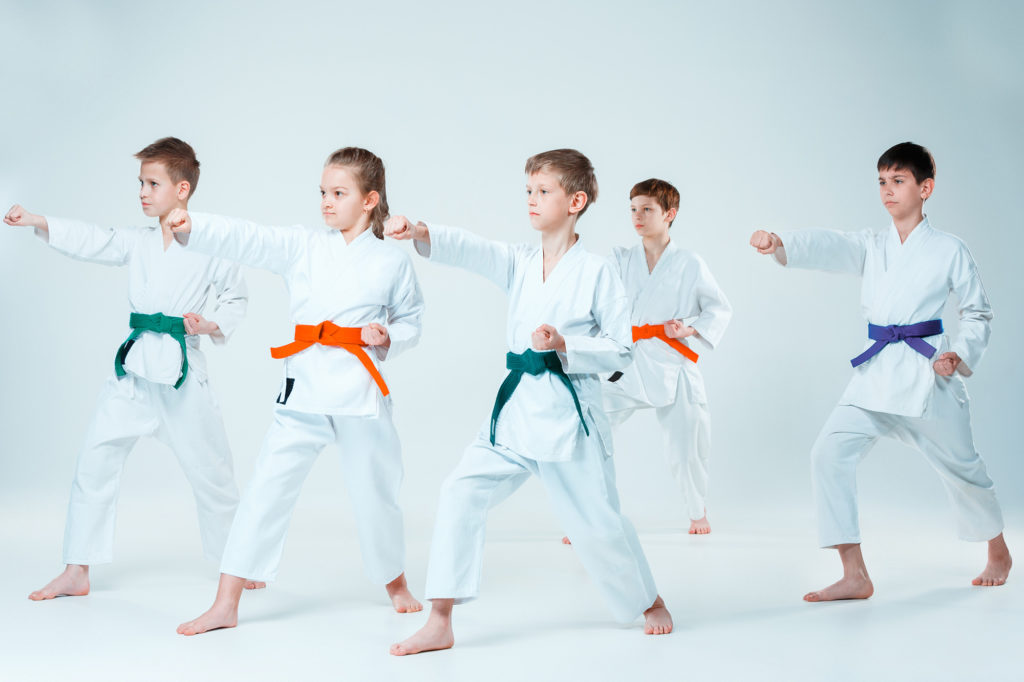
Enhances Physical Fitness
Physical fitness is a cornerstone of martial arts practice for self-defense. Martial arts training boosts endurance, builds muscular strength, and enhances agility and flexibility. Moreover, it fine-tunes hand-eye coordination and promotes a healthy lifestyle, aiding in weight loss or management. Regular participation in martial arts classes or training sessions amplifies physical fitness, improves overall health, and boosts confidence.
Self-discipline And Decision-making
Martial arts training for self-defense encourages the development of self-discipline—an indispensable trait. The commitment, dedication, and focus required to optimize the benefits of martial arts training enhance decision-making skills, particularly in high-pressure or hazardous situations. The application of these skills extends beyond training, helping practitioners react swiftly and calmly without impulsive or rash responses.
The Model Mugging program’s success, evidenced by its over 60,000 female graduates worldwide, exemplifies the effectiveness of martial arts for self-defense training.
Effective self-defense through martial arts demands critical decision-making skills. The ability to swiftly decide the most efficient techniques in a given situation is essential for effective self-defense. Many martial arts disciplines also emphasize conflict prevention over engagement as the first line of defense. While martial arts training includes potentially useful striking and grappling elements, decision-making skills are crucial. These skills can help avoid conflicts altogether by deescalating potentially dangerous situations before they escalate.
Provides Stress Relief
Martial arts practice for self-defense has numerous mental benefits in addition to the physical ones. Besides boosting confidence levels and enhancing physical fitness, martial arts serve as a powerful tool for managing stress.
Martial arts disciplines teach practitioners to control their emotions and reactions using techniques like deep breathing and focusing on deliberate movements. This mindful practice helps reduce tension and maintain clarity of thought in potentially stressful situations. Studies have demonstrated that regular participation in martial arts significantly reduces anxiety, stress, and even depression.
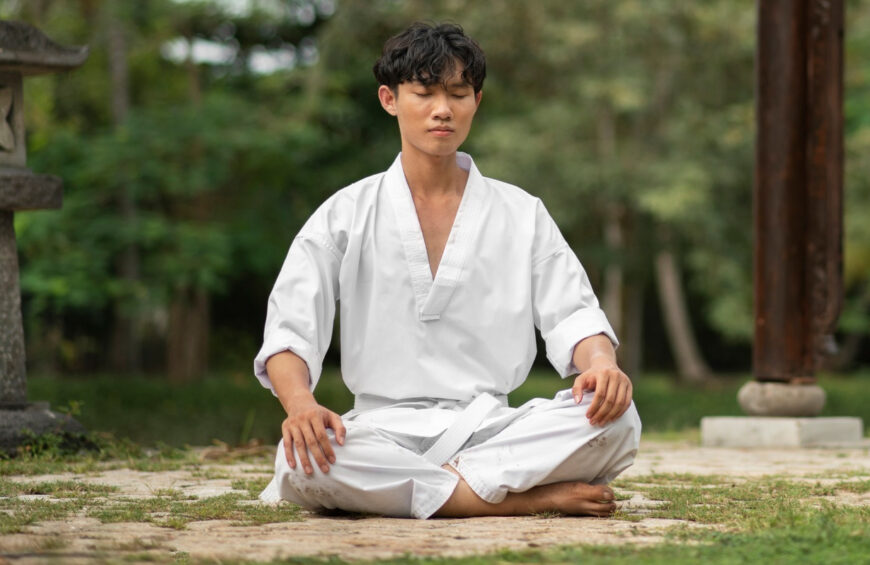
Improved Fitness, Posture And Coordination
Practicing martial arts for self-defense can yield many physical benefits. Improved fitness, posture and coordination are common results of training in different types of martial arts.
With regular practice, people using high intensity martial arts such as boxing or Muay Thai can expect to build up their strength and agility. Martial arts also help to improve balance, flexibility, and muscle tone.
This is especially true when a practitioner focuses on core exercises and breathing techniques during their training sessions. Additionally, certain forms of martial art also helps develop proper body mechanics which contributes towards an improved overall posture over time. As the movements become more fluid and coordinated through practice, the coordination of basic motor skills will be enhanced too!
Tips For Practicing Martial Arts For Self-Defense
To fully harness the benefits of martial arts for self-defense, consider setting achievable goals, emphasizing proper technique, locating a proficient instructor, and joining a class. Here are some essential tips for those embarking on this journey:
Set Realistic Goals
When venturing into martial arts for self-defense, setting realistic goals is paramount. It’s exhilarating to experience the newfound power and confidence that martial arts confer, but it’s equally crucial not to overrate your capabilities. Rushing into complex techniques can risk injuries and compromise your safety in real-life situations. Start with the basics and progress steadily to more advanced techniques. The Model Mugging Self-Defense program boasts a 98% success rate, with 59,000 graduates reporting no subsequent assaults—an attestation to the efficiency of realistic goal setting in safe and effective self-defense training.
Furthermore, remember that perfection is a journey, not a destination, especially in martial arts practice for self-defense. Regular practice fosters long-term skills invaluable for self-protection. With time and commitment, you’ll gradually master the necessary skill sets. The growing popularity of martial arts, with males constituting 73% of studio attendees, indicates its appeal and efficacy across both genders.
Focus On Technique
In martial arts practice for self-defense, the emphasis should be on mastering the correct technique. Proper form and accurate execution are your strongest assets in actual combat scenarios.
Every detail of a martial art influences its effectiveness against an adversary. Strive to execute moves with precision and accuracy. Recognizing when and where to apply specific techniques is also critical, given that self-defense scenarios can occur in standing and ground positions. Different attacks call for different responses, so being able to identify an impending attack gives you the upper hand. Dedication and consistent practice are the bedrocks of mastering your chosen martial art.
Seek Out The Best Instructor
Finding the right instructor is essential to learning martial arts for self-defense. Look for an experienced and knowledgeable teacher who has been in the field long enough to have a good understanding of various martial arts techniques.
A professional with certification or awards from tournaments, competitions, etc., is also preferred as they guarantee quality instruction. Ask around or look online for reviews of instructors before making your final decision. Additionally, martial arts studios are a type of business and need to be vetted thoroughly—take into consideration their class size, fee structure and professionalism when choosing the best one for you!
Join A Class
Enrolling in a martial arts class is an exceptional way to learn self-defense. Martial arts schools boast qualified instructors and offer unique benefits. Classes provide a secure environment for learning proper technique, building confidence, and enhancing physical fitness. With over 59,000 Model Mugging graduates reporting no subsequent assaults, it’s evident that high-quality self-defense instruction yields tangible results.
Regular attendance at classes fosters improved skill sets and reinforces physical and mental strength. Plus, it offers a deeper understanding of the martial art—something that cannot be obtained merely through videos or books. Additionally, most martial arts studios host tournaments and events, providing a platform to test and showcase your skills in a competitive setting, further fueling motivation and marking progress.
Learn From Home
Home-based martial arts training is a cost-effective and convenient alternative that complements traditional classes. A wealth of online resources, such as instructional videos and books, can equip you with basic techniques across various martial arts styles.
Regardless of skill level, you can challenge yourself with intricate techniques or stick to fundamental movements. Supplementing at-home practice with classes ensures constructive feedback and helps refine your technique. This blend of online resources and face-to-face instruction can benefit learners of any age, helping them stay safe in challenging situations.
Balance Martial Arts With Other Activities
While the aspiration to excel in martial arts is commendable, it’s important to balance your training with other activities. Martial arts focus on physical fitness and skills, which can also be honed through related sports and fitness routines such as running or weight training.
Engaging in diverse activities fosters well-rounded development and offers additional avenues to enhance physical capabilities. It also improves coordination, focus, reduces stress, and promotes a healthy lifestyle—all of which contribute positively to your martial arts performance.
Studies indicate that 73% of individuals practicing or attending martial arts classes are male. However, women who participate in self-defense courses like Model Mugging Self-Defense report feeling 95% safer, underscoring the heightened confidence and resilience garnered through practice.
Safety Tips
When it comes to self-defense, safety should always be the top priority. Here are some safety tips to keep in mind when practicing martial arts for self-defense: Prioritize your physical and mental wellbeing by knows your limits and never pushing yourself too far.
Educate yourself on potential health risks such as repetitive strain injuries or concussions before engaging in any form of combat sport. Be aware of your surroundings at all times and stay alert; this will help you spot threats quickly so you can avoid them or take the necessary defensive measures.
Lastly, practice proper hygiene, especially when training with a group – wear protective gear, follow sanitary protocols, and use common sense whenever possible. With these tips in mind, you’ll be well prepared to defend yourself effectively while keeping safe at all times!
FAQs
Which martial arts are best for self-defense?
The ideal martial art for self-defense varies based on individual needs and preferences. However, Krav Maga, Brazilian Jiu Jitsu, Muay Thai, and Judo are widely recognized as highly effective for self-defense. These styles emphasize realistic training methods and equip practitioners with practical techniques to defend against common attacks in real-life situations.
Is understanding the theory behind a martial art important when practicing it for self-defense?
Absolutely. Comprehending the principles and core concepts of your chosen martial art is vital for effective self-defense. Understanding the flow of techniques into other movements enhances learning efficiency and allows for faster, more accurate execution during an encounter, which could be crucial for personal safety.
How long does it take to become proficient enough in a martial art to use it as an effective tool for self-defense?
The timeframe varies among individuals. Generally, most people require at least six months of consistent practice before they feel confident enough to apply their skills in a real-life confrontation. Frequent repetition is key here; even if someone has limited time, regular practice of drills and classes can yield significant improvements over time, irrespective of age or fitness level.
Are there any special safety considerations I should keep in mind while learning martial arts techniques?
Yes, safety should always be a top priority when engaging in martial arts. Wearing protective equipment such as gloves and headgear whenever possible is recommended. Learning under the guidance of certified instructors who are proficient in teaching technique and technical aspects specific to certain disciplines is also important. Never attempt new moves without supervision or without being familiar with them, and always be mindful of your opponent’s health and well-being by avoiding strikes directed towards vulnerable areas like the eyes or throat.
Conclusion
So, there we have it! As someone who has spent a lot of time learning and teaching martial arts, I can tell you that it really can help you protect yourself. It’s all about practicing the right moves over and over again, until you know them off by heart.
There are so many different types of martial arts you can try, from Taekwondo to Krav Maga. But if you ask me, I’d say give MMA (Mixed Martial Arts) a go. I love MMA because it mixes all kinds of fighting styles together. It’s like the best of all worlds, and it’s really helped me feel safe and confident.
So why not try martial arts? It’s not just about safety, it’s also about keeping fit, being disciplined, and making smart decisions. And, most of all, it’s about having fun while learning something truly valuable. Don’t forget – practice makes perfect!
Read also: Best Martial Arts For Women’s Self-Defense

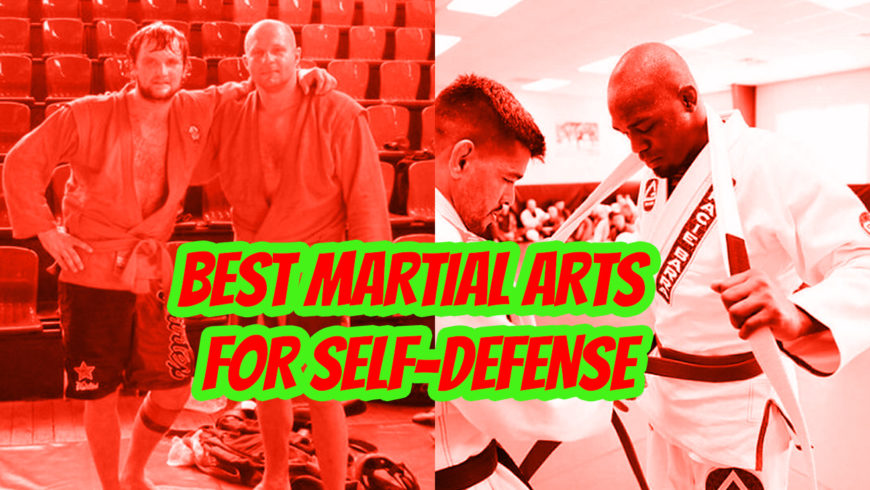







1 thought on “13 Best Martial Arts For Self-Defense (Ranked According to Experts)”
Thanks for explaining how you can be trained for real-life self-defense scenarios with martial arts. Once you know the type of martial arts you want to learn, it would probably be a good idea to visit several of the local studios that teach it. This way, you can talk about the availability and discuss the type of scenarios you’re worried about in order to determine if it fits the self-defense skills you’re looking for.